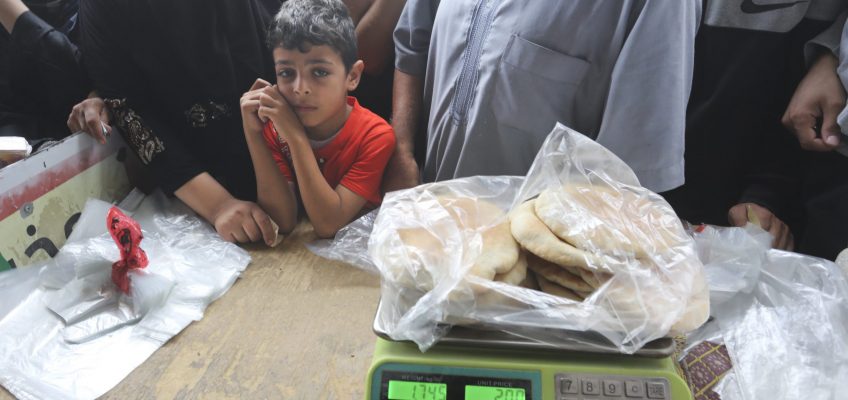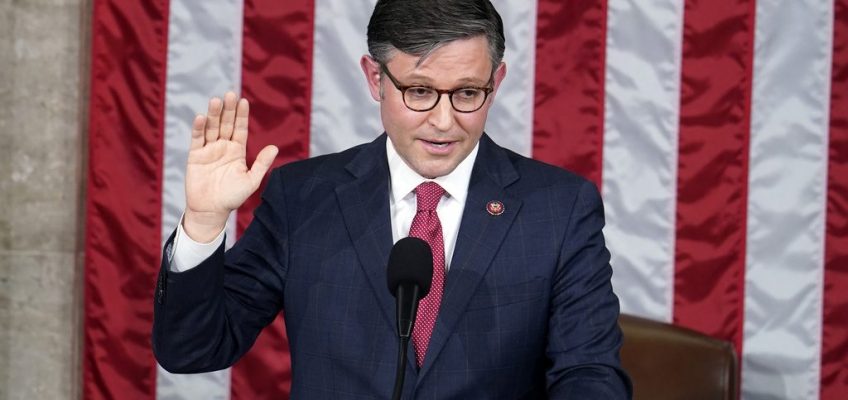In 2021, three major league teams lost at least 102 games. Two years later, two of them — the Arizona Diamondbacks and the Texas Rangers — will meet in the World Series.
The Orioles complete that trio of past losers, and although an American League Division Series sweep at the hands of the Rangers prevented them from reaching that same stage, their regular season featured more accomplishments than either club. After going 52-110 in 2021, Baltimore won 101 games and the AL East in 2023, enjoying what was comfortably MLB’s largest two-year improvement over the past century.
If Texas claims its first championship, it will have only two more victories across the regular season and postseason than the Orioles managed, while it’s not possible for Arizona to catch Baltimore in that regard. Yet, the Rangers and Diamondbacks are in the World Series, and the Orioles are at home.
Both teams, though, offer templates for Baltimore heading into the offseason. At his end-of-the-season news conference about 36 hours after the Orioles were eliminated, executive vice president and general manager Mike Elias had little to say when it came to how he’ll approach the winter, saying that it was too early and not necessarily beneficial to dive into details. But aspects of the last two clubs standing exemplify checklist items for Elias and Baltimore’s front office this offseason.
Add legitimate pitching
Before Wednesday’s waiver claim of left-hander Tucker Davidson from the Kansas City Royals, here were the pitchers the Orioles had acquired directly onto their 40-man roster over the past year: free-agent signees Kyle Gibson and Mychal Givens; trade acquisitions Darwinzon Hernández, Cole Irvin, Danny Coulombe, Shintaro Fujinami and Jack Flaherty; waiver claims Jacob Webb and Jorge López; and Rule 5 draft pick Andrew Politi. Collectively, the group cost the Orioles about $20 million and five prospects Baseball America ranked among their top 30 at the time of the trades, though all were outside the organization’s top 10.
None of those pitchers started a playoff game. Politi, Givens, Hernández and López didn’t make it to the end of the season in the organization. Irvin and Fujinami were left off the ALDS roster. The two highest-paid pitchers on it, Gibson and Flaherty, were used as long relievers when the Orioles were being blown out. Webb surrendered a game-deciding home run in Game 1 and a grand slam that broke open Game 2. Acquired for cash from the Minnesota Twins on the cusp of the season, Coulombe was the only member of this group to be worth at least one win above replacement in the regular season using the methodologies of both FanGraphs and Baseball-Reference.
Comparatively, among the pitchers the Rangers have added in that same span are multitime Cy Young Award winners Jacob deGrom and Max Scherzer; veteran left-handers Jordan Montgomery and Andrew Heaney; and dominant postseason pitcher Nathan Eovaldi. All have made at least one start during the playoffs except deGrom, who in six starts before Tommy John elbow reconstruction produced as many wins above replacement, according to Baseball-Reference, or more than all of Baltimore’s additions other than Coulombe.
The Diamondbacks were relatively tame, though their trade to acquire closer Paul Sewald from Seattle has paid off handsomely in the postseason. Their top starter, Zac Gallen, was acquired in a 2019 trade and has since blossomed into a Cy Young Award candidate; the Orioles perhaps have their own version of that in Kyle Bradish, who leads their core of early-career starters.
But as the ALDS showed, greater fortification is needed. Baltimore has shown reluctance to make splashy moves, but one wouldn’t necessarily be required. Eovaldi, who pitched seven innings of one-run ball to knock out the Orioles, signed for a guaranteed two years and $34 million, a deal structure Elias said the Orioles have had on the table with players they were unable to acquire.
“Those pursuits will be on the menu again,” he said. “We’re trying to win.”
Extend a young star
The Diamondbacks aren’t going to the World Series because they signed rookie outfielder Corbin Carroll to an eight-year, $111 million extension before this season. But it could help the possibility of returning throughout the 2020s.
Including a club option for 2031, the agreement goes for three seasons beyond Carroll’s initial period of team control. As Arizona fans have watched him shine in the postseason — including three key hits against the Philadelphia Phillies in Game 7 of the National League Championship Series — they do so knowing their prized phenom will be a Diamondback for years to come.
Orioles fans do not have the same certainty. In nearly five years under Elias, the only guaranteed multiyear contracts Baltimore has given out have been two-year pacts with pitchers recovering from Tommy John surgery. None of those agreements bought out any would-be free-agent seasons.
Infielder Gunnar Henderson, Carroll’s AL counterpart as the favorite for Rookie of the Year, has five more years of club control remaining, and catcher Adley Rutschman, the runner-up for that honor last year, has four left. In that sense, there’s not exactly a rush to ink the pair — Elias’ first two draft picks with Baltimore and the club’s top position players by wins above replacement in 2023 — to long-term contracts. But several other teams have reached extended agreements with their phenoms, and the continued absence of such a deal with Henderson or Rutschman adds to the looming possibility they spend much of their careers elsewhere.
Any such thoughts among the fan base have been induced by the organization itself, with not only its lack of action but also its words. In August, Orioles CEO and Chairman John Angelos told The New York Times the franchise would struggle financially to retain all of its young talent.
“When people talk about giving this player $200 million, that player $150 million, we would be so financially underwater that you’d have to raise the prices massively,” Angelos said.
Asked about the veracity of that comment after the season, Elias said, in his experience, “things don’t [always] come out exactly how you meant them” when speaking with media before saying the front office “quietly” examines extension possibilities.
“We are very focused on keeping this organization as successful and healthy as possible within the constraints of reality,” Elias said. “Obviously, we have players here that we love, and you look at it right now and you go, ‘Boy, I wish we had those guys under contract for longer than they currently are,’ and a big part of the calculus of keeping this franchise healthy, is pursuing or examining opportunities to possibly keep some of these guys longer. I’ve said it over and over. We quietly work on this in the background. I don’t want to be the one out talking about it, but obviously, that’s a part of our job as a front office to tackle that subject.”
Maximize playoff odds
Much was made of MLB’s playoff format when the four teams that won at least 99 regular-season games combined for one playoff win against 11 losses.
But the 90-win Rangers, the AL’s fifth seed, facing the 84-win Diamondbacks, the NL’s sixth seed, shows the importance of just getting into the field. Either team surely would have preferred a bye of the wild-card round and home-field advantage throughout the postseason en route to the Fall Classic, but they won enough in the regular season to get to the postseason, then won enough there to reach the World Series.
The Orioles’ approach to the 2022 trade deadline — when Elias focused more on future playoff pushes than the one in front of him — doesn’t need to be relitigated, especially given how well it has seemingly paid off for Baltimore’s long-term future. But it’s worth noting the 2023 Diamondbacks won one fewer game with a run differential one run worse than the 2022 Orioles. Cracking the field with a mid-80s win total gives a team as much of a shot of a World Series as triple-digit victories.
Perhaps that justifies Elias’ modest approach to both the offseason and trade deadline, acknowledging his intent was to put the Orioles in the postseason. They of course managed to exceed expectations, but they could have won 10 fewer games and made the playoffs regardless. Maybe the format devalues the regular season, but it also reinforces the importance of taking advantage of every opportunity to get beyond it.
Of course, teams such as Arizona are the exception, not the rule. According to FanGraphs, the Diamondbacks rank 20th in the majors in payroll, with a sizeable portion of theirs devoted to players no longer in the organization. Since 2008, the World Series winner has, on average, ranked in the top eight among the league’s 30 teams in payroll, with the average participant ranked in the top 12, according to data from Spotrac. Arizona is only the third team in that span ranked 20th or lower, with Tampa Bay’s pennant-winning clubs in 2008 and 2020 ranked 28th.
Each opponent the Diamondbacks beat to reach the World Series had a higher payroll, with Arizona going 9-3 as clubs with lower payrolls otherwise went 7-17 through the first three playoff rounds. That includes an 0-3 showing from the Orioles, who ended 2023 ranked 29th, against the eighth-ranked Rangers.
But the Orioles got in, and an offseason spent devoted to increasing the probability they do so again could be enough to find Baltimore playing at this time next year.
()




